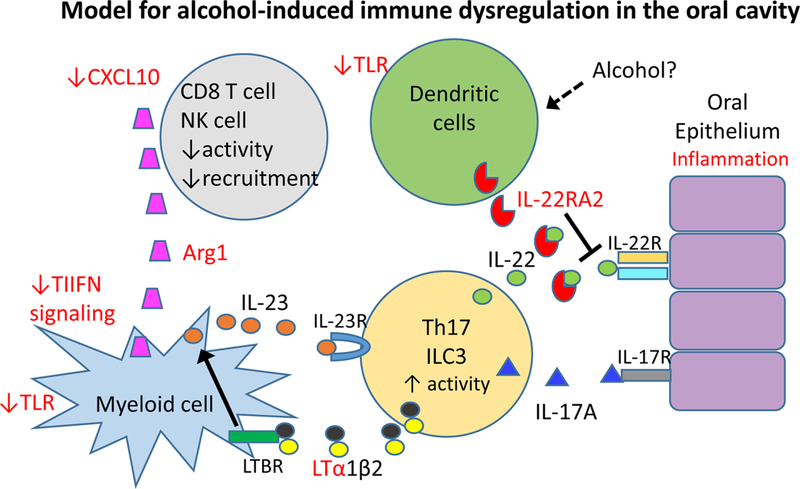Fig. 4.

Model of alcohol-induced immune modulation in the oral cavity. Genes in red are modulated by alcohol in the oral cavity. Changes to chemotactic signals and production of Arginase results in reduced T cell and NK cell recruitment activity. Decreased type I interferon (TIIFN) signaling or innate sensing by toll like receptors (TLR) may allow suppressive myeloid cells to produce IL-23 to amplify the Th17 or innate lymphoid cell 3 (ILC3) response, leading to IL-17A and IL-22-induced inflammation of the epithelium; This state may be further amplified by increased lymphotoxin α (LTa) production and increased signaling through the lymphotoxin receptor (LTBR) that upregulates IL-23 production. Alcohol leads to high level production of the IL-22RA2 soluble receptor, perhaps by local or accumulating dendritic cells, which may moderate tissue damage but also block tissue repair.
